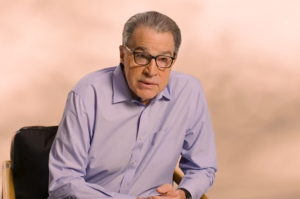Muslim Community in America 'Increasing Dramatically,' Says Researcher
The number of mosques in the United States has nearly doubled since 2000, according to recently released research on religion in American life.
"The subtext is that 9/11 has apparently not detracted, has not been an obstacle in that continued growth of the Muslim community," said Ihsan Bagby, associate professor of Islamic Studies at the University of Kentucky. "We counted a little over 2,100 mosques in America. And that's a substantial increase from (the year) 2000. Mosque participants have also increased."
Bagby was the lead researcher of "The American Mosque 2011: Basic Characteristics of the American Mosque, Attitudes of Mosque Leaders," which was released Wednesday. The Hartford Institute for Religion Research's organization Faith Communities Today (FACT), in cooperation with various Muslim groups, conducted the research as part of a larger study on congregational life in America.
"The Muslim community in America is growing, healthy, vibrant, and becoming more and more a part of the American landscape."
Bagby noted in his remarks that this growth came even during the fallout from the Sept. 11 terrorist attacks, when many feared a backlash against the Muslim American community.
"[9/11] has not led to a deviation of attitudes, … has not led to increased isolationism, has not led to increased alienation from America."
David Roozen, director of the Hartford Institute for Religion Research, said that in American congregational life Islam is "one of the few growth spots in America's religious mosaic."
The studies FACT has done before have concluded that "the overall net result [is] fewer people in the pews and decreasing spiritual vitality," he noted.
"Against this kind of a backdrop of a slow overall erosion in American congregational vitality the fifty percent plus growth in mosques and the thirty percent plus growth in mosque participation overall the decades…is especially dramatic," said Roozen.
The study interviewed 524 mosque leaders as part of the larger survey on American congregational life. Of those surveyed, over 65 percent of mosque leaders reported an increase of over 10 percent in attendance for Friday services.
Regarding mosque construction, the study found that although New York and California have the most mosques of all the states, it is the American South that has the most mosques in the nation.
Bagby noted that this was not the case in 2000. He attributed the increase to the metropolitan areas of Texas, Florida, and Georgia, as mosques are still rare in rural areas.
"I'm from Kentucky, I work in Kentucky and all through the mountains in Kentucky you'll find mosques," he stated.
"So if the mountains of Kentucky can have mosques and built mosques, built from the ground up, then you'll find mosques everywhere."
The announcement by FACT and its associates about this growth in mosques comes about a month after the organization presented its finding on church growth in America.
According to a FACT-sponsored webcast, conducted by C. Kirk Hardaway who is Congregational Research Officer for the Episcopal Church, mainline Protestant congregations have the slowest growth rate of all religious groups in America surveyed.
The findings presented in January also noted that conservative Protestant churches had the highest growth rate at 43 percent, followed by non-Christian congregations with 33 percent.
Other findings from "The American Mosque 2011" include:
- Mosques remain an extremely diverse religious institution. Only a tiny minority of mosques (3 percent) have just one ethnic group that attends that mosque. South Asians, Arab-Americans and African-Americans remain the dominant ethnic groups, but significant numbers of Somalis, West Africans and Iraqis now worship at mosques nationwide.
- The conversion rate per mosque has remained steady over the past two decades. In 2011, the average number of converts per mosque was 15.3. In 2000 the average was 16.3 converts per mosque.
- The majority of mosque leaders (56 percent) adopt a flexible approach to interpretation of Qur'an and Sunnah that takes into account the overall purposes of Islamic law and modern circumstances.
- Mosque leaders overwhelmingly endorse Muslim involvement in American society. More than 98 percent of mosque leaders agree that Muslims should be involved in American institutions and 91 percent agree that Muslims should be involved in politics.
- The vast majority of mosque leaders do not feel that American society is hostile to Islam.
- The vast majority (87 percent) of mosque leaders disagree that "radicalism" is increasing among Muslim youth. Many mosque leaders say the real challenge for them is not radicalism and extremism among the youth, but how to attract and keep them close to the mosque.
In addition to Bagby and Roozen, other speakers present on Wednesday to discuss the results of the study were Nihad Awad, national executive Director of the Council on America-Islamic Relations, Zahid Bukhari, president of the Islamic Circle of North America, and Safaa Zarzour, secretary general of the Islamic Society of North America.



























